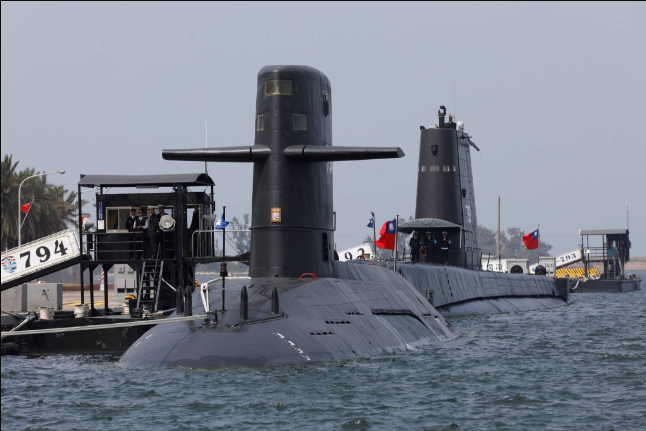Taiwan hopes to deploy at least two new, domestically developed submarines by 2027, and possibly equip later models with missiles, to strengthen deterrence against the Chinese navy and protect key supply lines, the head of the program said.
Taiwan, which China claims as its own territory, has made the indigenous sub program a key part of an ambitious project to modernize its armed forces as Beijing stages almost daily military exercises to assert its sovereignty.
President Tsai Ing-wen, who initiated the program when she took office in 2016, is expected to launch the first of eight new submarines on Thursday under a plan that has drawn on expertise and technology from several countries – a breakthrough for diplomatically isolated Taiwan.
Admiral Huang Shu-kuang, Tsai’s security adviser, who is leading the program, said a fleet of 10 submarines, which includes two Dutch-made submarines commissioned in the 1980s, will make it harder for the Chinese navy to project power into the Pacific.
Huang said the first submarine, with a price tag of T$49.36 billion ($1.54 billion), will use a combat system by Lockheed Martin Corp LMT.N and carry U.S.-made MK-48 heavyweight torpedoes. It will enter sea trials next month before delivery to the navy by the end of 2024.
For subsequent models, Taiwan will leave space for submarine-launched anti-ship missiles, but adding those weapons depends on production availability in a U.S., where capacity was already tight, Huang said, without naming the companies that might be involved.
He called the submarines a “strategic deterrent” to Chinese warships crossing the Miyako Strait near southwestern Japan or the Bashi Channel that separates Taiwan from the Philippines.
Huang said Taiwan’s diesel-electric submarines can keep China at bay within the first island chain, referring to the area that runs from Japan through Taiwan, the Philippines and on to Borneo, enclosing China’s coastal seas.
“This was also the strategic concept of the U.S. military – to contain them within the first island chain and deny their access,” Huang said. “If Taiwan is taken, Japan will definitely not be safe, South Korea will definitely not be safe.”
China’s defense ministry did not respond to a request for comment.
The Chinese navy, including its Shandong aircraft carrier, has become increasingly active in recent months off Taiwan’s eastern coastline, prompting worries that China could launch an attack from that direction. Eastern Taiwan is where planners have long envisioned the island’s military regrouping and preserving its forces during a conflict.
Huang said the submarines can help maintain the island’s “lifeline” to the Pacific by keeping ports along Taiwan’s eastern coast open for supplies in a conflict.
“The submarines will keep their ships away from our eastern shores,” he said.
Chieh Chung, a military researcher at Taiwan’s National Policy Foundation think tank, said the fleet would have trouble with that task, because China could position warships in the Pacific before launching an attack.
But he added that the submarines could occupy strategic ambush points in the region and “greatly harm (China’s) combat ability” by targeting high-value ships such as carrier groups or landing fleets.
Copyright Ships & Ports Ltd. Permission to use quotations from this article is granted subject to appropriate credit given to www.shipsandports.com.ng as the source.

